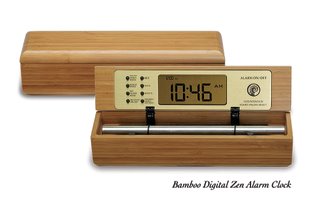
Two Women Walking, Shunshô Katsukawa, Ukiyo-e
Meditation: It’s all about sitting still, inside a room, going inward. Right? Well, not necessarily. Buddhist tradition has long incorporated a more active technique known as walking meditation. Popularized in the West by Vietnamese monk Thich Nhat Hanh and other teachers, walking meditation often crops up at meditation retreats as a periodic break from long sessions of sitting.
For me—especially on a fine summer morning—a contemplative barefoot circuit of my dewy backyard can sound a whole lot more enticing than hunkering down on a cushion inside. And I seem not to be alone. Across the country, it’s getting easier to find opportunities to meditate in action. Dude ranches, sea kayaking outfitters, and wellness retreats now offer programs that combine basic mindfulness practice with everything from backpacking and rock climbing to horseback riding and paddling.
And why not? A growing body of scientific research supports meditation’s physiological and psychological benefits, including boosting the immune system, helping lower blood pressure, and reducing stress, anxiety, and depression. “Taking mindfulness outside, into the natural world, is another way of connecting the dots,” says Kurt Hoelting, who leads contemplative sea kayaking trips in Alaska. “It helps make it apparent not just intellectually, but also in our bodies, that this process of engagement with the present moment is an avenue to healing and deep restoration.”
Barefoot hiking
Sometimes, freeing your feet can be a revolutionary act. For walking meditation, Thich Nhat Hanh recommends ditching footwear. “You can feel the floor and connect with the earth more easily without shoes,” he writes in Walking Meditation (Sounds True, 2006). “The flow between you and Mother Earth becomes stronger. The longer you practice walking with this connection, the more your heart will be softened and opened, and the more you will feel nurtured, solid, and taken care of by the earth.”

ume tree (japanese blum) Kaisan-do of Ryodaishi temple
Most “barefooters” don’t meditate in any sort of deliberate way, and chances are, they’ve never heard of Thich Nhat Hanh. But his words certainly would resonate clearly. “Going barefoot makes you feel more connected with nature, that you’re part of a bigger universe,” says Jim Guttmann, a member of Barefoot Hikers of Minnesota, an informal group that gathers for regular boot-free rambles.
Like any meditation technique worth its salt, mindful walking begins with a focus on the breath. Breathing in and out with awareness brings the mind home to the body. Practice twice a day, for as few as 10 breaths initially. Breathe normally, sit straight but relaxed, a half-smile on your lips.
Now start walking slowly. Walk around the perimeter of your largest room, or choose a quiet, scenic spot outside. To establish a steady rhythm, try counting steps and using words. If you take three steps for each in-breath, for example, you can say silently, “Lotus flower blooms.” And visualize flowers blooming under your feet. The main thing is to have no goal of arriving; just enjoy each step.

stillness practice: walking meditation in nature
For some, these activities are a way to explore mindfulness through a pastime they already know and love. Others have established a meditation practice but want to broaden their experience. For just about anyone, these “conscious” outings are a great way to slow down, savor silence (which helps increase awareness of what’s really going on, both inside and out), and reconnect with nature—along with one’s own mind, body, and spirit.
excerpted from Natural Solutions, July 2007 (Adapted from Walking Meditation (Sounds True, 2006) by Nguyen Anh-Huong and Thich Nhat Hanh)
Use our unique “Zen Clock” which functions as a Yoga & Meditation Timer. It features a long-resonating acoustic chime that brings your meditation or yoga session to a gradual close, preserving the environment of stillness while also acting as an effective time signal. Our Yoga Timer & Clock can be programmed to chime at the end of the meditation or yoga session or periodically throughout the session as a kind of sonic yantra. The beauty and functionality of the Zen Clock/Timer makes it a meditation tool that can actually help you “make time” for meditation in your life. Bring yourself back to balance.

Bamboo Zen Chime Clocks & Timers
Now & Zen – The Meditation Timer Store
1638 Pearl Street
Boulder, CO 80302
Posted in Chime Alarm Clocks, Japanese Inspired Zen Clocks, Meditation Timers, Meditation Tools, mindfulness practice, zen monks, Zen Timers